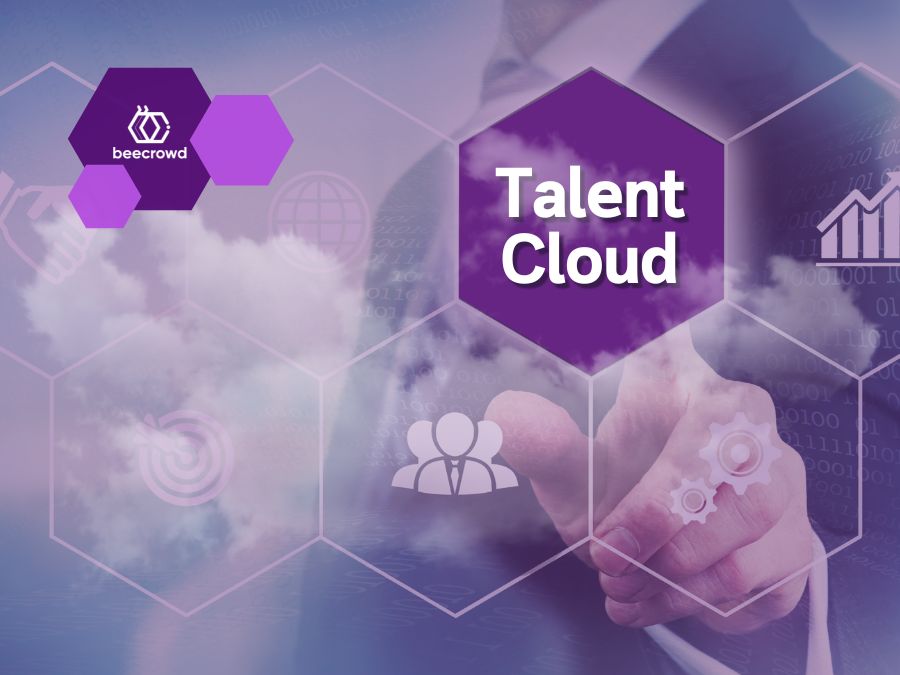In the dynamic landscape of the corporate world, the rise of the Talent Cloud represents more than a mere paradigm shift: it marks the beginning of a new era in employer-employee relationships. This revolutionary concept extends beyond flexible work arrangements, fundamentally redefining how companies structure their teams and interact with professionals from diverse backgrounds and skills.
The Talent Cloud is fueled by the growing adoption of remote work and the expansion of the flexible economy. In this environment, physical boundaries and geographical constraints are replaced by digital connectivity, enabling specialized talents to come together to collaborate on specific projects, regardless of their physical location. This decentralized approach not only diversifies the workforce but also provides unprecedented agility, allowing organizations to adapt quickly to market changes.
Unlike traditional employment models, where stability often outweighs innovation, the Talent Cloud prioritizes meritocracy and results delivery. Organizations can now assemble teams tailored for each specific project, selecting professionals with the most relevant skills, regardless of their employment status. This ensures an optimal fit between project demands and employee competencies while fostering an environment where individual talent is recognized and rewarded.
The Talent Cloud approach is not just a response to the demands of a rapidly changing world, it is a vision for the future of work relationships. By adopting this approach, companies not only optimize their workforce but also embrace a culture of collaboration and continuous learning. In doing so, they position themselves at the forefront of innovation, ready to tackle the challenges of the global market with agility, creativity, and, above all, a profound respect for the individual talent that drives corporate success in the current era.
Companies that successfully adopt the Talent Cloud approach distinguish themselves by focusing a considerable part of their efforts on:
- Embracing flexible and remote work, using autonomous collaborators and a more fluid organizational structure where talent is not confined to a specific location
- Implementing agile management strategies that are adaptable and responsive to changes in business needs, bringing together teams with the right skills for specific projects and leveraging a diverse set of talents when necessary
- Adopting cloud-based talent management solutions instead of relying solely on traditional hiring, regardless of whether individuals are full-time employees or contractors
- Focusing on the skills and results achieved by employees rather than using traditional evaluation structures, concentrating on forming teams with the necessary skills, regardless of where individuals are physically located or how they are contracted
- Encouraging continuous learning and development, recognizing that skills are evolving rapidly and ensuring the training and upskilling of full-time employees to remain valuable contributors to the organization
This shift toward a more flexible and results-oriented talent management approach is not without challenges. Managing a distributed workforce requires new strategies to ensure effective communication, promote a cohesive culture, and provide opportunities for continuous development. However, organizations that overcome these challenges have the opportunity to create more dynamic and innovative workplaces.
I recall that 15-20 years ago, the concept of cloud infrastructure was not well understood. When approaching CIOs or CTOs of that time to discuss migrating their applications from on-premises data centers to the cloud, there were various concerns: Who will manage the servers? Who will handle backups? How can we ensure that mission-critical applications will always be available? Where will the servers be located? Twenty years have passed, and today, it is unthinkable for a company not to embrace cloud concepts for infrastructure, data storage, and applications. In fact, companies that do not use cloud infrastructure concepts have likely become obsolete.
At beecrowd, we have been witnessing a similar acceptance process and learning curve occurring for the Talent Cloud. When approaching CPOs (Chief People Officers), CHROs, and Delivery Heads about the use of the Talent Cloud, very similar concerns to those of the past arise: Who will manage the teams? How can we ensure that talents will work together? How to manage remotely? How to know if talents possess the necessary skills? We believe that, in a maximum of 10 years, companies that do not embrace the use of the Talent Cloud will lose competitiveness because they will always be limited to using only the talents they have internally (“on-premises talents”). Just as it is difficult to imagine the use of server infrastructure that is not in the cloud today, it will become difficult to imagine the use of collaborators and teams that are not within a Talent Cloud in the near future.



